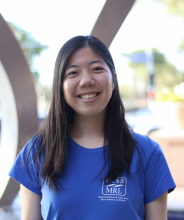
Major:
University:
Mentor(s):
Faculty Sponsor(s):
Faculty Sponsor's Department(s):
Project Title:
Project Description:
Silicon-vacancy (SiV) centers are emerging as a promising tool in quantum technologies due to their stable and narrow optical transitions and long-lived spin. This could be employed in quantum information processing and quantum communication protocols. The SiV center’s quantum properties are measured via the light that it emits when relaxing from its orbital excited states to its orbital ground states. To spectrally resolve light emitted by the four SiV center transitions near 737 nm, we intend to integrate an optical cavity with a finely-tunable length, into the light collection path of a confocal microscope, enabling us to control the wavelength of the light we measure at our single-photon detector. The cavity will consist of two mirror-coated lenses with ~98-99% reflectivity that are mounted to a piezoelectric tube, the length of which can be changed by applying voltages to electrodes patterned on its surface. The piezoelectric material will allow length and radial expansion of the tube as voltage is applied. The length of the cavity, 900 μm from mirror to mirror, is chosen to ensure that the cavity will only transmit one SiV resonance at a time while the dimensions of the piezoelectric tube are chosen to enable tuning across a full spectral range, guaranteeing that all wavelengths near 737 nm can be transmitted through our cavity by applying different voltages. The piezoelectric tube dimensions were also selected to allow fine-tuning of the transmitted wavelength so that the narrow, ~100 MHz-wide SiV transitions can be well-resolved. This spectral resolution will then enable us to study how these transitions change in response to applied strain, magnetic, and electric fields. The study of SiV centers will eventually be applied to interface the SiV center spin with mechanical motion to use in processing quantum information.
